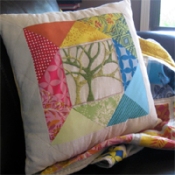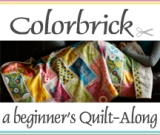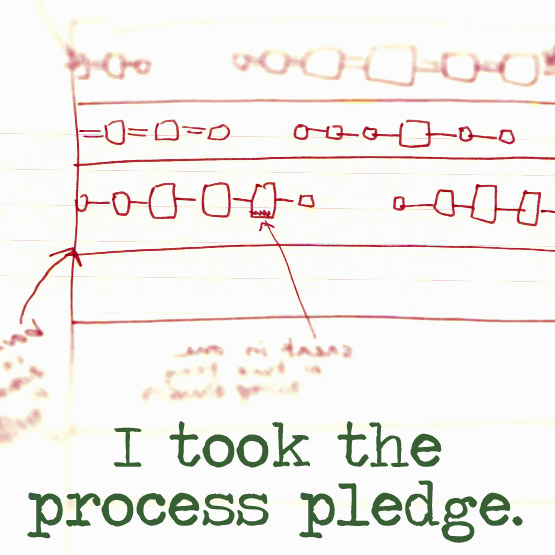So many projects… so little time! Today I’ve several projects swimming around my brain, and scattered across my dining room. I chose to focus on revamping my ironing board, just because it’s one I could finish today.
My black and white striped cover is about 10 years old and stained. That plus the fact that it’s cushioned with polyurethane foam (which is quite unhealthy, but rather common in upholstery, mattresses, etc.) has had a cover remake on my mind for some time. I’ve seen tutorials with a nice drawstring casing, but my old cover was just stapled to the board. Sounds good to me! Here’s what to do, if you want to remake your ironing board cover the easy way.
Tutorial
Materials: Old ironing board with wooden board center. 1/2 yard new cover fabric (for a tabletop sized board). 1 bath towel. Tightly woven selvedge or twill tape. Scissors. Staple gun. Assistant. Hammer (optional).
1. Cut off the old cover and trash it along with the nasty foam. For new padding, use one large bath towel, folded in half.
2. Lay the doubled towel out on a table and upend the now-naked ironing board on top. Next, cut around your board, leaving just enough towel to bend over the side of the board, completely covering the edge. For me, that was about 3/4″ from the side of the ironing board (I had to trim it down a bit more after the picture below). You want your sides cushioned so that the edge of the board doesn’t eventually cut into your cover fabric. Set aside.
3. Lay out your new cover fabric face down. Again, upend your board and cut around it. But, this time leave a good 2 1/2″ of extra fabric around the board, so you have plenty to wrap over the towel and in towards the center of the board. Now remove the board. Lay the doubled towel in the center of your cover fabric and return the upended board.
4. Call that assistant! One person should pull the new cover fabric tightly over the side and in on the back of the board. While holding that still, place your tightly woven selvedge or twill tape over the edge of your fabric. Your assistant (in my case, hubby) should use the staple gun to staple through the twill tape and the new cover fabric at the same time. The selvedge/twill tape will help prevent the staples from ripping your cover. And, yes, it looks a little nicer too, for all those times that you’re showing off the underside of your ironing board.
5. Continue pulling and stapling around the board. If your staples stick up a bit from the board, you can use a hammer to bang them flush, if desired. Trim off any extra fabric, which may extend beyond your twill tape line near the curves. Flip and enjoy!
I used Anna Maria Horner’s “Fortune” fabric from the Good Folks Collection. It’s a nice match to our dining/sewing room decor.

























